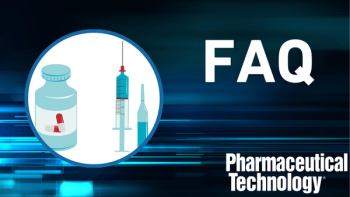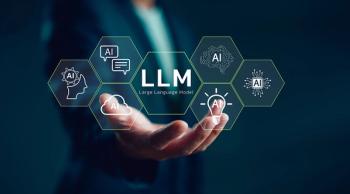
- Pharmaceutical Technology June 2025
- Volume 49
- Issue 5
- Pages: 12-15
Advancements in Biopharma Spur Innovation
The quickly evolving development of biopharmaceuticals is impacting innovation in the industry overall.
The biopharmaceutical industry has seen exciting advancements in the past decade, with cell and gene therapies, personalized medicine, messenger RNA (mRNA) vaccines, and new treatments for autoimmune diseases. The global biopharma industry is expected to increase at a compound annual growth rate of 8.97% from 2025 to 2030; this growth is suspected to result from a demand for targeted therapies, new alliances, and increased innovation (1). The oncology field is also making an impact, with immunotherapies, cell therapies, and gene therapies advancing quickly (2).
As more and more new modalities reach regulatory approval and enter the market, David Kuntin, CEO and cofounder of Mesenbio, sees the biopharmaceutical market becoming more diverse with a number of highly targeted treatments, such as antibody–drug conjugates (ADCs) and next-generation antibody therapies (e.g., bispecific antibodies) being developed. “Cell and gene therapies (CGTs) are also advancing, though interest in early-stage assets is waning; we can expect more gene therapies for inherited diseases and CAR [chimeric antigen receptors]-T or other cell-based therapies expanding beyond rare cancers into more common conditions, if pricing is something that can be addressed,” Kuntin says. “Messenger RNA-based products will certainly move beyond traditional vaccines—for instance, there is significant effort in mRNA therapeutics for cancer vaccines and protein replacement therapies. Crucially, these modalities won’t exist in isolation. Many will become established alongside traditional biologics. For example, an autoimmune condition might in the future have treatment options ranging from monoclonal antibodies to an mRNA therapy or even a cell-derived product.”
Other approaches, such as extracellular vesicle (EV) therapeutics, are in development and are a promising new class of regenerative or delivery agents, according to Kuntin. “Overall, the future commercial landscape will not be dominated by one modality but characterized by a wide array of therapeutic approaches, each tailored to different medical needs. This rich diversity is exciting and marks a shift toward more personalized and precise medicine; though, it also means our industry must support a broader range of manufacturing and regulatory strategies to bring these treatments to patients.”
“I’m excited to see multispecific antibody- like biologics synergistically block multiple cancer cell survival pathways or help induce immune responses, such as cell-killing we are currently seeing with cell therapies,” Christian Cobaugh, chief scientific officer and founder, Vernal Biosciences, says. “Multispecifics are also offering more favorable target product profiles and potentially better outcomes in oncology.”
Lipid nanoparticles (LNPs) and mRNA have become “derisked,” according to Cobaugh, and the clinical data from LNP-mRNA for gene editing and oncology are impressive. “Most of the in vivo gene-editing programs that we see from companies like Intellia, Beam, and Verve rely on LNP-mRNA (plus guide RNA) and can be dosed to effect,” Cobaugh says. “Further, the therapeutic cancer vaccines are another great way to leverage the speed to clinic that mRNA manufacturing offers.”
While a significant number of illnesses will still be addressed by small-molecule drugs, according to Miguel Forte, president, ISCT, board member, ARM, and CEO Kiji Therapeutics, biologics offer the ability to target certain diseases with specificity and mechanism of action. “If a patient has a genetic disease, it is likely that the best approach would be gene therapy,” Forte says. “I would expect cell, and gene-edited cells to play a major role in oncology—as is already the case—and also in autoimmune diseases, in parallel and possible combination with biologics.”
Diversification in the bio/pharmaceutical industry that provides a mix of traditional small-molecule drugs, biologics, and vaccines may drive more targeted therapies and intensify market competition, according to Max Baumann, cofounder, Treehill Partners.
“As we observed in an industry analysis we performed comprising 1200 clinical programs, only a minority of companies currently optimize their development for commercial success,” Baumann says. “Combined with increased segmentation of clinical end markets, this has a significant impact on the return that potential pharmaceutical drug development offers for investors, and absent a clear investment thesis, not all the products we currently see in development will be successful in securing funding to market entry and break-even.”
Innovation often comes at a cost, however, and this must be balanced. While the industry benefits from the cycle of innovation, formulation, and production, says Oury Chetboun, CEO, Seekyo Therapeutics, new drugs also must be cost effective for patients and to develop and produce. “You may have a fantastic drug in the lab which costs a massive amount to be scaled up, but if you can’t get that into a large-scale production or at a reasonable cost, then you can’t do anything,” Chetboun cautions.
Opportunities in drug delivery
Each patient has different needs, and each disease is different; therefore, a mix of formulation and drug delivery methods is needed for optimal treatment, according to Chetboun. Patient adherence is also important, however. Complying with a treatment plan is easier for patients when fewer doses or administrations are required. Side effects may also impact patient adherence, making multiple delivery route options more attractive, suggests Chetboun.
Creative formulation and drug delivery strategies are necessary for new modalities to reach patients, Kuntin says, and he sees less invasive administration as a major trend. Nasal and inhaled formulations for vaccines and antibody therapies might advance, which could target drugs to mucosal tissues. “There is also significant interest in achieving oral delivery of biologics; traditionally, proteins and nucleic acids get digested in the gut, but new techniques like protective coatings, nanoparticle carriers, or special capsule devices are showing promise in allowing antibodies or peptide therapies to be taken as a pill,” Kuntin explains. “While not every biologic will become a tablet, even a few successes in oral biologic delivery would be paradigm-changing for chronic treatments.”
Adding to this, Cobaugh says, “The ex vivo cell therapies, mostly CAR-Ts and HSCs [host cell proteins], have validated some key mechanisms of action including gene editing. But those therapies are more akin to procedures, and highly invasive and risky ones at that, than they are products. I’m looking forward to advancements in non-viral genetic delivery technologies, such as LNPs and PNPs that can de-target the liver and retarget blood and immune cells to transform these procedures into products that can be dosed to effect.”
Stability and distribution of new modalities is also critical, says Kuntin, with development ongoing to formulate drugs that remain stable at refrigerator temperature or room temperature, therefore removing the need for ultra-cold storage.
“We’re likely to see more use of advanced carriers like lipid nanoparticles, which have already proven their worth in delivering mRNA vaccines and could be refined for other drugs,” Kuntin says. “Looking further ahead, there is exploration of novel delivery vehicles—for example, utilizing extracellular vesicles as a natural means to carry therapeutic molecules to target tissues. EVs in particular could signal a new paradigm in biologic delivery, with production approaches able to be intrinsically integrated into the EV production process.”
Technology provides more options
Advancements in technology, such as artificial intelligence (AI), machine learning (ML), and digitization, have played a part in the development of new and innovative modalities. The ability to work with large amounts of data and manage processes digitally may accelerate processes and reduce cost, according to Forte. “Importantly though are the opportunities to accelerate development by providing faster data analysis, scenario elaboration, and digital comparison approaches (digital twins) that will overall improve the process and speed of development,” he stresses. AI can also facilitate the exploration of different models and conditions by using digital twins, adds Forte. “In this context, the conditions and requirements for scaling up can be modeled and analyzed, accelerating the process overall,” he notes.
“In biologics design, for example, machine learning algorithms can suggest modifications to an antibody or protein to improve its efficacy and stability, or even help design novel therapeutic proteins from scratch,” Kuntin says. “This means we can generate and evaluate a wider range of therapeutic options in silico before moving to lab experiments, saving time and resources. I’ve seen cases where an AI model predicts how a change in a molecule’s structure might affect its function or how a particular patient subgroup might respond to a therapy—insights that would have taken much longer to glean through trial and error in the lab.”
According to Cobaugh, AI is also helping design antisense oligonucleotide therapies and locating gene-editing sites. He also sees AI playing a role in predicting and designing antigens for personalized disease treatments.
“We’ve also seen how tools like Alpha-Fold3 are using machine learning to accurately predict the structures of most biomolecules, including proteins and nucleic acids, reducing what used to be a dissertation’s amount of work to a day or two of computing time. Labs, such as the David Baker lab, are now able to take a de novo approach to design completely synthetic proteins with specific functions in mind,” Cobaugh says.
The development pathway can be streamlined by digitization, using advanced data analytics and automation in preclinical research, says Kuntin. “AI-driven analysis helps interpret complex datasets, such as finding patterns in thousands of data points from early safety studies or optimizing formulation conditions for a new modality. In clinical development, digital tools assist in trial design and patient selection—for instance, algorithms can match eligible patients to clinical trial protocols more effectively or predict outcomes using real-world data, which helps in designing smarter trials. Overall, these technologies are accelerating development timelines and helping us make more informed decisions at each step. The end result is a higher probability that truly effective therapies make it through to approval by focusing our efforts on the most promising candidates and approaches.”
Digital technologies can “create a smoother bridge” across discovery and manufacturing, according to Kuntin, with critical factors and ideal settings for production identified faster with fewer errors. AI/ML can then play a bigger role in commercial manufacturing by monitoring production in real time.
Baumann adds that AI/ML can bridge the gap by facilitating tech transfer through digitally capturing and standardizing process knowledge. “This integrated approach supports faster, more reliable scale-up and reduces the risk of costly manufacturing setbacks,” he says.
“Modern biologics facilities often use advanced sensors and control software that adjust process conditions on the fly, guided by AI models that have ‘learned’ from the development data,” Kuntin says. “This means we maintain consistency between a small lab batch and a large manufacturing batch. I’ve found that even for complex new modalities—like extracellular vesicles—having a strong digital data backbone from R&D through to production makes tech transfer much more seamless. It reduces the risk for surprises during scale-up and helps get therapies from the bench to the patient more reliably and efficiently. I would say, however, that caution must be exercised whenever these tools are used, and to avoid over-reliance on these, as there is a tendency to treat AI solutions as ‘black boxes’—a totally obscured machine with the ability to pump out data—without truly critically evaluating the outputs. There are clear and important distinctions between generative AI approaches and those that use existing data and draw connections and contextualize these into meaningful outputs, and that is a crucial thing to bear in mind when using AI in drug development, especially when interrogating large data sets.”
“There is significant value to be generated in two main areas,” says Bauman, “namely, ‘doing the right thing/development strategy—where AI/ML can be instrumental in identifying and supporting the best strategic direction and avoid mis-steps that may put an entire company on an inferior path—and ‘doing things the right way’/execution of key tasks along the development journey, where error rates can be reduced, equations be better solved, and ultimately better development outcomes be created through aggregating thousands of slightly improved puzzle pieces,” says Baumann.
The future is bright
New biopharma modalities, along with new technology, have given patients new opportunities and provide value to society, according to Forte, and they could lead to advancements in other areas and product types.
Kuntin sees some new modalities becoming established treatment options in the next decade. “Not every new modality will succeed commercially—each must prove not only clinical benefit but also that it can be delivered to patients reliably—but I am optimistic that a good number of them will become staples in the medical toolkit,” says Kuntin. “In my view, we’re seeing a co-evolution: as therapeutic modalities mature, they push the industry to develop new production capabilities, and as manufacturing technology leaps forward, it expands the realm of what therapies can successfully reach patients. The end result is that patients should benefit from a broader range of treatment options, and these will hopefully become more affordable and accessible as manufacturing efficiencies improve. The future biopharma landscape will be defined by this synergy between groundbreaking science and equally innovative manufacturing.”
“The interplay between modality innovation and manufacturing evolution will define the next decade of biopharma, driving both operational excellence and improved patient outcomes. We remain cautious about the current geopolitical environment inflicting fundamental changes to our industry, which range from choice of production location to pricing of the end product and with that affect the commercial attractiveness/viability of geographical markets across the globe,” Baumann says.
References
1. Grand View Research. Biopharmaceutical Market Size and Trends. Grandviewresearch.com (accessed May 19, 2025).
2. Haigney, S. Emerging Treatments for Cancer. BioPharm International. Next-Generation Biotherapeutics eBook 2025 April.
Articles in this issue
6 months ago
ICH Q6B for Analytics6 months ago
Guidance on Quality Culture StandardsNewsletter
Get the essential updates shaping the future of pharma manufacturing and compliance—subscribe today to Pharmaceutical Technology and never miss a breakthrough.





